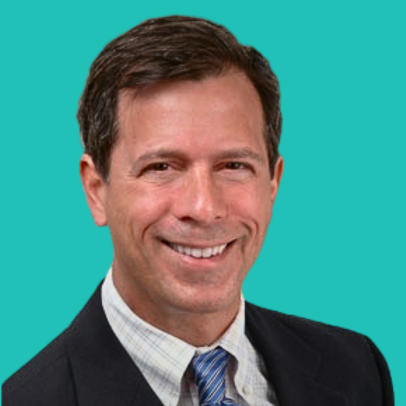
As the cost of medical care and the desire for approaches that may not be available in the United States increases, medical tourism is becoming an attractive alternative for many Americans. Many foreigners also seek out American physicians when treatments aren’t available in their home countries.
Medical practices can generally be involved in medical tourism internally or externally. Internally, physicians from foreign countries who work in America may seek to establish business ventures that work with the foreign country to encourage foreigners to come to the US for treatment.
Medical practices may also seek to establish medical practices in foreign countries so that foreigners can seek treatment at these facilities. In some cases, Americans may use their foreign practices for convenience (Americans combine the treatment with taking time to recuperate while vacationing) or because certain treatments or drugs that would be regulated in America are not regulated abroad.
There are a variety of medical-legal issues involved with medical tourism. Two common compliance issues involve the corporate practice of medicine and illegal-fee splitting. Doctors and practices who create separate entities (for example, to advertise in foreign countries) need to understand whether that entity may be violating an American or a foreign corporate practice of medicine law.
Are medical tourism legal questions variations on MSO-Physician arrangements?
Are medical tourism legal questions variations on MSO-Physician arrangements?
Physicians who practice in the US need to be careful about violating the Stark Law and Anti-Kickback Statute (AKS). Stark and the AKS were enacted to protect patients. Physicians should make referrals to health providers and companies based on what is in the best interest of the patient and not in the physician’s own financial interest.
Skilled healthcare lawyers can advise medical practices on the corporate practice of medicine laws in the state where the physician practices medicine. They can also advise what relationship may violate Stark Law and the AKS – and whether any exceptions or a safe harbor apply. As an alternative to direct financial relationships with non-medical practices, the lawyer can explain how a management services organization operates and how the MSO can benefit the medical practice’s medical tourism practice.
Reasons medical tourism is growing
Medical tourism, according to the Centers for Disease Control and Prevention, is a term that covers traveling internationally in order to receive medical care. Common reasons for seeking medical care abroad in addition to cost and availability are:
- Recommendations by friends
- The chance or need to seek medical care while on vacation or while working abroad
- Preference for medical care from health providers who share the culture of the patient
Medical tourism is a multi-billion-dollar industry. Millions of Americans seek medical care outside of the US each year.
Common medical tourism procedures include:
- Dental care
- Non-cosmetic surgery including orthopedic surgery
- Cosmetic surgery
- Fertility treatments
- Cancer treatments
- Tissue and organ transplants
Some of the countries Americans travel to for medical care include Argentina, Brazil, Costa Rica, Cuba, India, Malaysia, Mexico, Singapore, and Thailand.
The risks involved with medical tourism
There are numerous dangers and risks involved with receiving medical care abroad. These risks (which can affect both Americans who seek treatment abroad and foreigners who seek treatment in the US) include:
- Infections. Infection dangers include: “wound infections, bloodstream infections, donor-derived infections, and acquisition of bloodborne pathogens, including hepatitis B, hepatitis C, and HIV.” There’s also the danger of acquiring antibiotic-resistant infections.
- Air travel itself creates risks. Air travel and surgery independently increase the risk of blood clots, including deep vein thrombosis and pulmonary emboli; travel and surgery together further increase the risks. “Commercial aircraft cabin pressures are roughly equivalent to an outside air pressure at 6,000–8,000 ft. above sea level. Medical tourists should not fly for 10 days after chest or abdominal surgery to avoid risks associated with changes in atmospheric pressure.”
- Qualifications. The facilities and doctors may not have the correct accreditation and licenses
- Privacy concerns. The providers may not have the same privacy and security rules as apply in America such as the Healthcare Insurance Portability and Accountability Act (HIPAA).
- Drugs and medical devices may not be regulated with the same oversight as in America. Some drugs may even be contaminated, expired, or counterfeit.
- Insurance. A key question for all patients is whether their insurance company will cover the cost of any foreign services or treatments. Most patients who use medical tourism are expected to pay for their medical services at the time of service/treatment.
Americans who receive treatment abroad should request a copy of their medical records so the records can be provided to American health care providers for follow-up care in the United States. Foreigners who receive treatment in America should seek their medical records too. Doctors, in turn, who give out health records need to make sure the record-giving complies with HIPAA.
Patients who have surgeries or treatments abroad should understand that typical vacation activities my affect their chances of a good recovery. Some common vacation activities that may be detrimental to a recovery include:
“sunbathing, drinking alcohol, swimming, taking long tours, or engaging in strenuous activities or exercise after surgery.”
The CDC recommends that medical tourists plan ahead 4-6 weeks before traveling by speaking with the primary care physician and making sure the tourist has the medications needed and the vaccines that are required.
Recommendations by various medical organizations
Different medical societies and groups have their own advice and guidelines for medical tourism. American physicians should understand these guidelines as well. There are numerous resources that discuss and offer guidelines for medical tourism care from organizations inlcuding the American Academy of Orthopaedic Surgeons and many others. Other organizations with medical tourism guidelines include:
- The American College of Surgeons.
- The American Society of Plastic Surgeons, which recommends people who have had cosmetic surgery for “the face, eyelids, or nose, or who have had laser treatments, to wait 7–10 days before flying.”
- The Aerospace Medical Association, which has published medical guidelines for airline travel that provide useful information on the risks of travel with certain medical conditions
- The American Society of Plastic Surgeons, the American Board of Medical Specialties, and the American Society for Aesthetic Plastic Surgery, which all accredit overseas physician – though accreditation is no guarantee of a good outcome.
The American Medical Association guidelines
The AMA recommends that employers, insurance companies, and other entities that have facilities for medical care abroad comply with the following:
- “Medical care outside the United States must be voluntary.”
- “Financial incentives to travel outside the United States for medical care should not inappropriately limit the diagnostic and therapeutic alternatives that are offered to patients, or restrict treatment or referral options.”
- Health providers should only refer patients who seek medical care to institutions which have “been accredited by recognized international accrediting bodies (such as the Joint Commission International or the International Society for Quality in Health Care).”
- Before patients travel, the local physicians should help coordinate the patient’s care to coordinate the foreign care with the local medical care.
- The patient and physicians should work together to understand the coverage issues including coverage for follow-up care in the US.
- “Patients should be informed of their rights and legal recourse before agreeing to travel outside the United States for medical care.”
- Health providers and related health services should assist the patient in obtaining access to physician licensing and outcome data, the accreditation, and outcome date of the foreign facilities.
- The physicians and other health providers need to make sure that “transfer of patient medical records to and from facilities outside the United States” complies with HIPAA requirements.
- Patients should be advised of the dangers of long flights and vacation activities if the patient seeks to take advantage of medical tourism.
Transplant Tourism
One unique branch of medical tourism is transplant tourism – where the traveler is seeking “an organ or stem cells purchased from an unrelated human donor for transplantation.” Americans may consider foreign transplants if there is a long waiting time in the US and for cost factors.
Some of the risk factors involved with transplant tourism are receiving “fewer immunosuppressive drugs than is the current practice in the United States” and not receiving antimicrobial prophylaxis. “Immunocompromised travelers are more susceptible to infection, which can pose additional challenges while traveling.”
The World Health Assembly, in 2004, passed measures to encourage member countries to take steps to protect donors from donating because of exploitation of donors who are poor and vulnerable.
Inherent difficulties of Medical Tourism
Many of the patients are traveling because of urgency or desperation for medical help that isn’t available or that can’t be paid for through current American insurance policies.
According to Managed Care, some of the additional problems with medical tourism are:
“The Medical Tourism Association (MTA), an industry trade group, surveyed U.S. medical tourism patients in 2015 and found that the lead motivator was cost savings (61%), followed by quality (21%). About two thirds of outbound travel for medical care is for dentistry or cosmetic surgery.”
“Medical tourism coverage has the most appeal for self-funded plans for medium-sized employers with 4,000 to 10,000 employees. For example, HSM Solutions in Hickory, N.C., a manufacturer of bedding and furniture components, has offered a medical travel package to its employees since 2007. Tim Isenhower, the company’s director of benefits, says about 500 employees have taken advantage of the benefit. HSM has a contract with Rao’s IndUS Health network, which gives employees access to health care facilities in Costa Rica, the Cayman Islands, and Cancun, Mexico.”
Insurance issues
Health providers who work with patients who want to take advantage of medical tourism should inform their patients that there will be issues involved with coverage for procedures when Americans travel abroad or when foreigners travel to America. There will also be issues involving insurance for follow-up care – especially if the medical tourism care isn’t covered by insurance or there are significant co-pays and deductibles.
Medical tourism is becoming an attractive field for American physicians who are still connected to the countries the doctors came from. It’s also an attraction for physicians who may want to develop working relationships with physicians in other countries. Physicians need to understand a range of issues including the corporate practice of medicine and fee-splitting when physicians work with other physicians and work to promote medical tourism.
Contact Cohen Healthcare Law Group, PC for legal counsel on healthcare transactions, regulatory compliance, and FDA and FTC law. Our experienced healthcare & FDA attorneys advise healthcare companies and healthcare providers ranging from medical centers, to integrative and functional medicine practices, cosmetics and supplement companies, and medical device manufacturers.

Contact our healthcare law and FDA attorneys for legal advice relevant to your healthcare venture.
Contact Us

